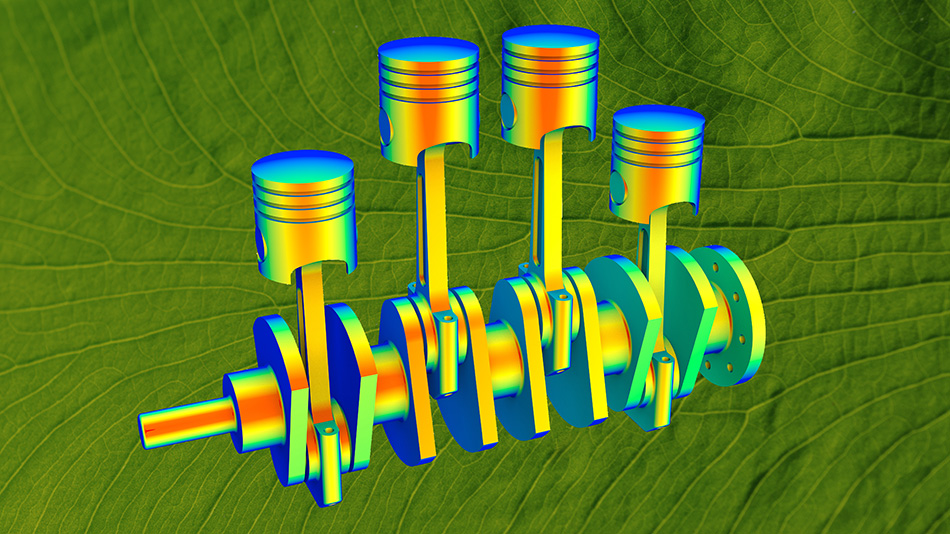Giving Explosives an On/Off Button
Giving Explosives an On/Off Button


Incorporating thermally expandable microspheres into explosive materials has the potential to make them safer and smarter.
When it comes to explosives, one of the most dangerous activities is simply moving them from place to place. But now, researchers at Purdue University developed a switchable explosive—one that can be deactivated during handling and transportation, then reactivated to detonate in the field.
In energetic science, “insensitive” means resistant to triggers like impact, friction, spark, or shock. The research team focused on shock insensitivity and engineered an explosive that resists accidental detonation but could shift to the shock-sensitive state when needed.
“The goal was to design an explosive that was very safe until you want to detonate it,” explained Steven Son, a professor at Purdue University’s School of Mechanical Engineering.
RDX—royal demolition explosive, with a 1,3,5-trinitro-1,3,5-triazinane chemical compound—is a high explosive, which means that it can detonate rapidly and with great force. High-density RDX, with large voidless crystals, is less sensitive to shock initiation. But when it’s broken into smaller particles and mixed with a hydroxyl-terminated polybutadiene (HTPB) binder, interfaces and voids form called hot spots that concentrate energy and increase shock sensitivity. When the mixture is shocked, trapped gases in the voids compress and heat rapidly, triggering an explosive reaction. By adjusting the size, number, and placement of these hot spots, the team was able to control the explosive’s sensitivity.
More Material Coverage: Spider Silk Stretches for Strength
“Detonation occurs when compression energy concentrates at internal imperfections. These hot spots, if hot enough and the right size, trigger reactions that amplify the shockwave into a self-sustaining detonation,” Son explained.
Heating the RDX85.0 mixture (85:15 RDX to binder) to 125 °C (257 °F) creates cracks and debonding. Image scans using an electron microscope showed more pores and fractures compared to unheated samples. These voids acted as critical hot spots, sensitizing the previously insensitive mixture. The heated sample detonated, proving thermal cycling alone could create enough hot spots for sensitization.
In another test, researchers replaced some RDX with commercially available thermally expandable microspheres (TEM)—tiny balloon-like particles that expand with heat. Before heating, the TEMS1.70 sample was insensitive to shock. At 125 °C (257 °F), the TEMs expanded, fractured the rubberized binder matrix, then deflated or melted as the sample cooled. The resulting cracks remained, functioning as critical hot spots that triggered detonation under shock.
Heating another TEMS1.70 sample to 95 °C (203 °F) expanded the microspheres, which stayed inflated after cooling. This created larger voids and reduced density but failed to switch sensitivity of the sample. The larger, sub-critical hot spots lacked the energy concentration needed for ignition.
“Ideally heating the TEMs creates hot spots at the right size. But at 95 °C (203 °F) the microspheres became too large to sensitize. If they kept expanding, like in the 125 °C (257 °F) sample, they pop and collapse back down, creating small voids, switching the sensitivity of the material,” Son explained.
Across eighteen samples with varied RDX:TEM ratios, only two samples, both heated to 125 °C (257 °F), switched from insensitive to sensitive. One followed the RDX85.0 formulation, while the other used TEMS1.70.
Discover the Benefits of ASME Membership
Researchers used a micro-CT scanner to capture detailed 3D images of the material’s internal structure. The scans revealed TEMs expanding at 95 °C (203 °F), increasing volume and pulling explosive crystals away from the binder. At 125 °C (257 °F), the scans revealed TEMs expanding, then deflating or melting, and leaving smaller voids that functioned as effective hot spots.
TEMs feature a thermoplastic shell that encloses a volatile liquid hydrocarbon. When heated to a specific activation temperature, the liquid vaporizes and expands, stretching and softening the shell. This reaction causes the microspheres to balloon from 50 to 100 times their original size. After cooling, they maintain a hollow, closed-cell structure with gas trapped inside, which dramatically reduces their density. Manufacturers used TEMs in various industries, including lightweighting plastics and composites, foaming agents, textured printing, insulation, adhesives, and sensitizers in emulsion explosives.
The Purdue team used commercially available TEMs, but their size limited effectiveness. These particles started at 10 microns and expanded beyond the ideal range for explosive sensitization, which requires sizes less than 10 microns after expansion. To address this, the team is developing custom TEMs that start at the nanoscale and expand precisely into the target range.
To produce the rubberized explosive, researchers blended RDX in a 4:1 coarse-to-fine weight ratio with 15 percent liquid binder. In select samples, they replaced part of the RDX with TEMs to study how varying microsphere content affected sensitivity. The binder ratio stayed consistent at 15 percent across all formulations, ensuring structural uniformity while testing the impact of different energetic and additive compositions.
You Might Also Enjoy: Seeing Sponges Through a New Lens
In cookie recipe terms, RDX serves as the flour and sugar, providing explosive power. TEMs work like chocolate chips or baking soda, introducing voids that shift texture and sensitivity when heated. The binder acts like eggs or butter, holding everything together.
Researchers blended the ingredients using a resonant acoustic mixture powered by sound vibrations in two three-minute cycles. After mixing, they hand-packed the blend into rectangular molds and cured the samples at room temperature for four days. Once hardened, they sliced the blocks into 25 mm (1 inch) samples using a precision wire saw. This simple, scalable process allowed easy manufacturing of switchable explosives.
“The RDX-TEM switchable explosives mix up like a baking recipe. There’s no showstopper for the scalability,” Son said.
Although the current TEMs don’t meet industrial standards, this work is laying the foundation for next-generation explosives with field-ready, switchable detonation. With further development, these materials could revolutionize safety in storage, handling, and transportation.
Nicole Imeson is an engineer and writer in Calgary, Alta.








